5 heated airer mistakes that are doubling your drying time, ruining your flooring and causing energy bills to rise
Experts warn these blunders can pose serious risks to your home
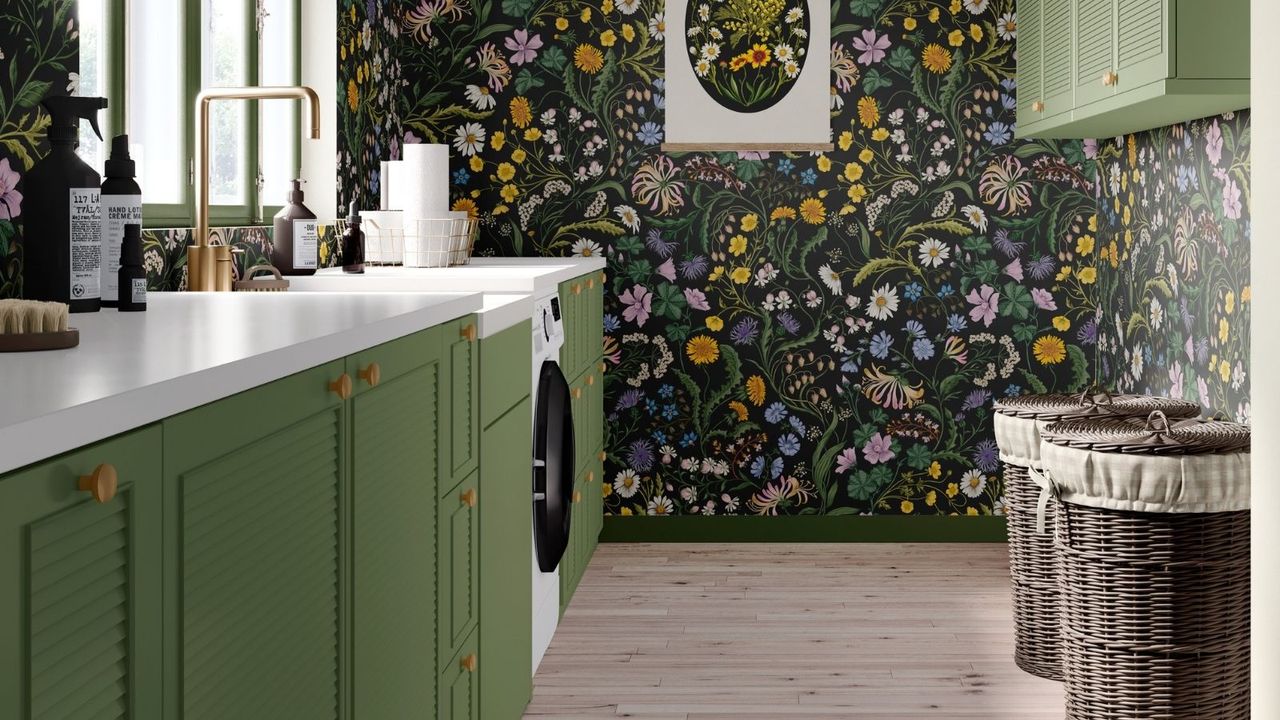

There's no denying that laundry can be a monotonous chore, which can often feel extremely time-consuming, dull and tedious.
But, laundry is, of course, a necessary task – leading us to seek time-saving solutions, particularly during the colder, wetter months, such as using heated airers. While these are efficient and, usually, more eco-friendly than a tumble-dryer, experts warn that there are heated airer mistakes to avoid, which could be ruining your floors by increasing humidity, scratching surfaces, and actually causing your energy bills to rise.
Here, we spoke to a flooring expert for their tips on how to do laundry with a heated airer – without running any risks.
Heated airer mistakes to avoid
1. Not using a protective mat
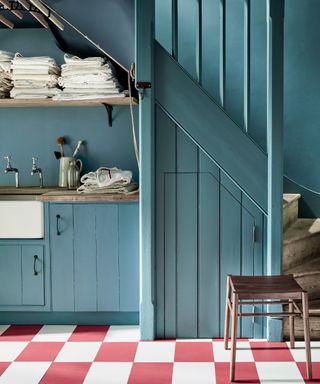
While heated airers are a great way to dry things to never put in the dryer, not placing them on a heat-resistant mat could be ruining your flooring,' says Liam Cleverdon, flooring expert at Flooring King.
He says, 'The warmth emitted from heated clothes racks can lead to warping or bucking in flooring materials, particularly hardwood and laminate. This occurs because the intense heat can cause the wood fibers to expand and contract unevenly
'Over time, prolonged exposure to heated temperatures can weaken the adhesive bonds in engineered wood, making the layers susceptible to separation and further damage.'
To avoid this, simply place your heated airer on a heat-resistant mat, such as the number one bestselling UBeesize Under Grill Mat available at Amazon, which is large enough to fit a clothes airer, and is waterproof, fire-proof, and durable. This will help to protect your floor from both heat and moisture and provide an extra layer of protection for your flooring.
It will also come in handy if you need to iron without an ironing board, as it can effectively turn any flat surface into a makeshift ironing board.
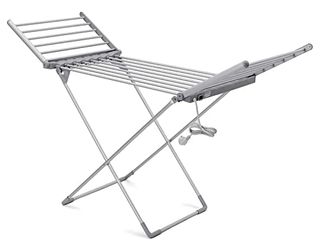
This heated clothes rack has 20 hanging rods offering plenty of space for drying loads of laundry. It's also sturdy, heavy-duty, and made of rust-resistant stainless steel.
2. Not positioning your heated airer away from furniture & walls
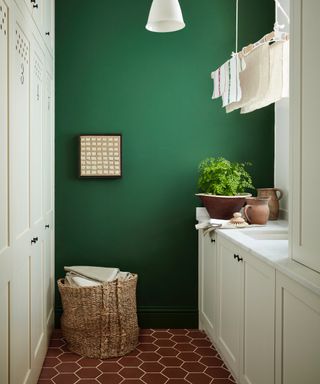
Much like the heat from your airer may ruin your flooring, it can also affect your furniture and walls.
Flooring expert Cleverdon recommends, 'Position the heated clothes rack away from walls and other furniture to allow for proper air circulation. This can help minimize heat transfer to your floors and reduce the risk of damage.'
This is something you may want to consider when planning small laundry room ideas or planning a utility room, depending on where you wish to use your heated airer.
If you live in a particularly small apartment, it may, therefore, be best to avoid heated airers altogether. I recently tried the Joseph Joseph Eclipse indoor clothes airer and it's perfect for tiny spaces, as it can be positioned up against the wall while an ingenious fabric screen hides drying laundry from view. If you're after a more budget option, we recommend the number one top-rated Amazon Basics Foldable Portable Laundry Drying Rack available at Amazon, which has over 8,000 five-star reviews.
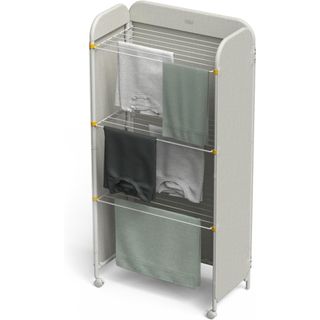
This drying rack also fold completely flat, making it perfect for storage in any small space, and has a drying capacity of 45 feet. Each tier can be folded up or down as needed, meaning it's also perfect for drying dresses and trousers.
3. Not monitoring humidity levels
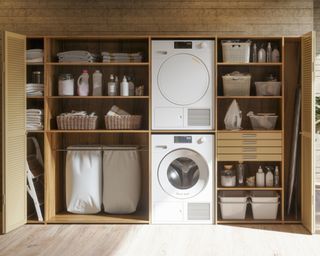
As flooring expert Cleverdon explains, 'As clothes dry, they release moisture into the air. This increased humidity can settle on the flooring, creating an environment conducive to mold growth and mildew.
'Over time, this excess moisture can also lead to damage to various flooring materials, including carpet and wood.'
Therefore, it's important to keep an eye on indoor humidity levels, particularly during drying sessions, and Cleverdon recommends using the best dehumidifier to keep levels under control. Here at Homes & Gardens, our top pick is the GE Energy Star Portable Dehumidifier 50 Pint available at Amazon, and, if you're wondering whether dehumidifiers help with mold at home, Cleverdon advises that they do.
He says, 'Using a dehumidifier can help control moisture levels and prevent the accumulation of humidity that can lead to mold and mildew,' protecting not only your floors but your walls and furniture too. In particular, considering the best place to put a dehumidifier can maximize its efficacy and ensure optimal functioning.
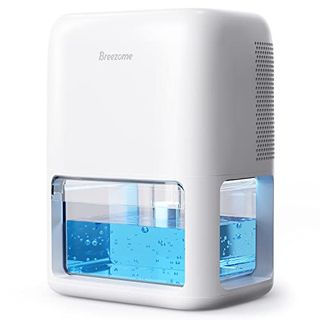
This dehumidifier is a great, affordable option. It's equipped with dual semiconductor condensers to double the effect of other small dehumidifiers, and it can successfully absorb up to 700 milliliters of excess moisture a day. It also features a quiet sleep mode for undisturbed sleep, and a timer function to prevent the use of excessive energy.
All prices were correct at the time of publication.
4. Not choosing the correct clothes airer
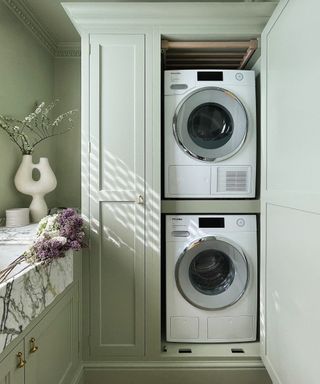
Flooring expert Cleverdon explains, 'It's important to keep in mind that the weight of a clothes rack, along with the items it holds, can cause marks, scratches, or dents on softer flooring materials like vinyl and laminate.
'Over time, this can impact both the appearance and durability of the flooring,' and is only magnified by the introduction of heat.
Therefore, as it can be difficult to repair scratches on wood and restore hardwood floors without sanding, Cleverdon suggests using a heated clothes airer designed with features that reduce heat transfer to the floor, such as elevated bases, or insulation materials.
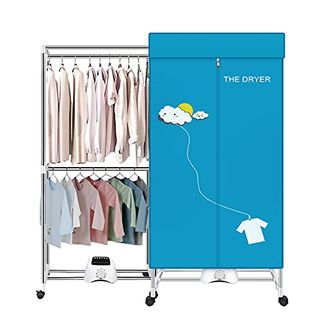
This portable dryer is elevated off the floor and on wheels, making its portability both easy and efficient. It can dry 15 kilograms of laundry at a time without causing dents in your flooring, and when the heated airer is not in use, it can be used as a wardrobe too.
5. Not limiting drying time
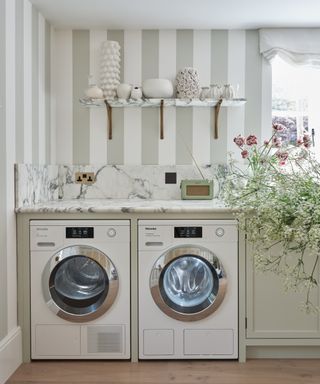
Finally, if you're looking to save energy when doing laundry, and protect your flooring, it's important to limit the amount of time you use your heated airer when plugged in.
Flooring expert Cleverdon explains, 'Different flooring materials expand and contract in response to temperature changes. The heat generated by drying clothes can cause uneven expansion, potentially leading to gaps or cracks in certain types of flooring over time.'
Therefore, you should limit drying time to two to four hours per load, he recommends, depending on the thickness and material of the clothing, as this duration is usually enough time to dry most items while reducing the risk of excessive moisture in the surrounding area.
'It's also advisable to check if the clothes are dry before the maximum time is reached to avoid unnecessary use of the heated airer,' adds Cleverdon, which is an effective way to cut energy bills.
To maximize the efficiency of your heated airer while it is on, using hangers, such as the Mainstays Durable Plastic Clothing Hangers available at Walmart will allow you to hang more items of clothing on at once.
FAQs
Do heated airers use a lot of electricity?
While heated airers are a good way to reduce energy bills, as they typically use less electricity than a tumble-dryer, it's important to know how to choose energy-efficient appliances.
To begin with, look at labels to help you identify energy-efficient models, and always consider the size of your appliance – the smaller the better, as long as it adequately suits your needs.
Our resident cleaning and organizing expert on Homes & Gardens, Chiana Dickson, swears by the benefits of a heated airer: 'I recently tried a heated airer and I will never use my tumble dryer again,' she says. If you need any more convincing, it is also an excellent way to be sustainable at home.
Sign up to the Homes & Gardens newsletter
Design expertise in your inbox – from inspiring decorating ideas and beautiful celebrity homes to practical gardening advice and shopping round-ups.

Ottilie joined Homes & Gardens last year, after finishing a Master's in Magazine Journalism at City, University of London. With previous contributions in Livingetc and Motorsport Magazine, she produces content for the Solved section on the website, focusing on clever tips and tricks to keep your home beautiful, organized and clean. She also has an undergraduate degree in English Literature and History of Art from the University of Edinburgh, where she developed a love for inspiring interiors and architecture.
-
 I’ve ditched my usual mop, dusters and scrubbers for this compact Joseph Joseph cleaning system – it's great for bathrooms
I’ve ditched my usual mop, dusters and scrubbers for this compact Joseph Joseph cleaning system – it's great for bathroomsStreamline your cleaning system and save space with this all-in-one kit
By Ottilie Blackhall Published
-
 Inside Shea McGee's Summit Estate – an elegant mountainside project that blends grand architecture with hushed cozy interiors
Inside Shea McGee's Summit Estate – an elegant mountainside project that blends grand architecture with hushed cozy interiorsShea McGee has mixed the old and new by creating a sophisticated chalet-inspired property that sits right at the heart of the mountains
By Eleanor Richardson Published
-
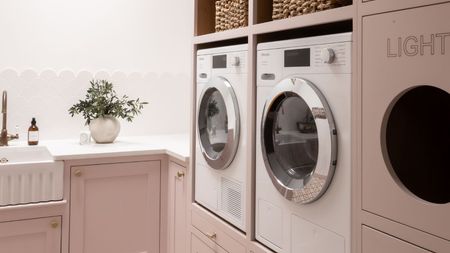 My cheap dehumidifier makes easy work of air drying laundry indoors despite the humidity of spring showers – get yours on sale for just $49 now
My cheap dehumidifier makes easy work of air drying laundry indoors despite the humidity of spring showers – get yours on sale for just $49 nowIt's useful for lots of things around my home
By Punteha van Terheyden Published
-
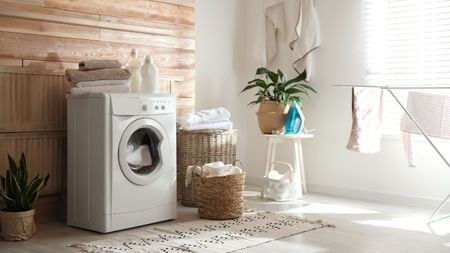 Looking for a natural laundry-softening alternative? I'm a professional cleaner and it's time to ditch synthetic ones for 5 non-toxic softeners that work
Looking for a natural laundry-softening alternative? I'm a professional cleaner and it's time to ditch synthetic ones for 5 non-toxic softeners that workRefresh your laundry routine with these fabric softener alternatives
By Karina Toner Published
-
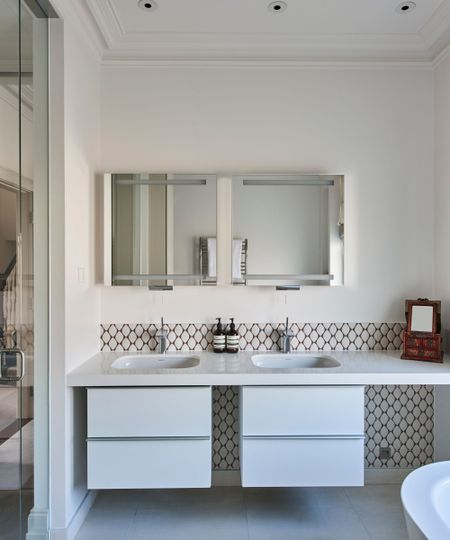 Unlock the magical mold-killing and stain-busting superpower of this humble household ingredient that costs just 50 cents
Unlock the magical mold-killing and stain-busting superpower of this humble household ingredient that costs just 50 centsIf you have aspirin in the house, you can use it to banish mold
By Ottilie Blackhall Published
-
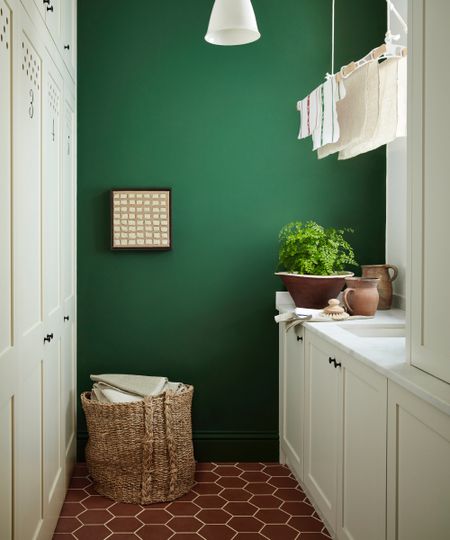 5 warning signs you're using the wrong amount of detergent – avoid greasy residue, stiff fabrics and skin issues with these simple cleaner-approved tips
5 warning signs you're using the wrong amount of detergent – avoid greasy residue, stiff fabrics and skin issues with these simple cleaner-approved tipsPlus, why it's important to get the amount just right
By Ottilie Blackhall Published
-
 6 ways to prevent mold and damp in bedrooms – expert solutions to maintain a safe sleep environment
6 ways to prevent mold and damp in bedrooms – expert solutions to maintain a safe sleep environmentDon't sleep on these six tips, experts urge
By Seraphina Di Mizzurati Published
-
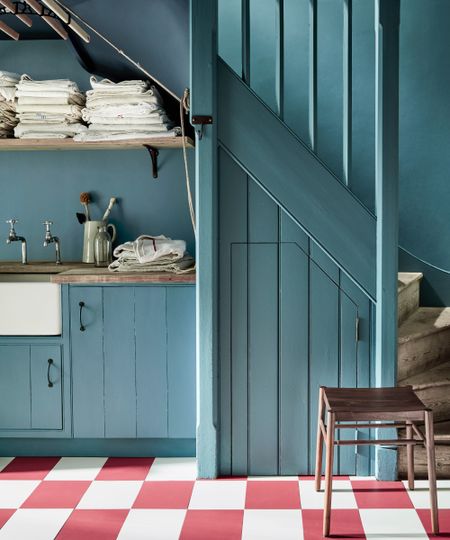 Laundry experts reveal 7 unexpected washing rules you can throw out the window – from separating fabrics to mixing whites and colors
Laundry experts reveal 7 unexpected washing rules you can throw out the window – from separating fabrics to mixing whites and colorsForget everything you thought you knew
By Ottilie Blackhall Published
-
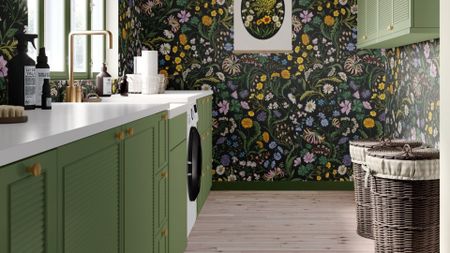 Using this button on your washing machine will cut your bills and help the planet
Using this button on your washing machine will cut your bills and help the planetA single switch can make a load of difference
By Chiana Dickson Published
-
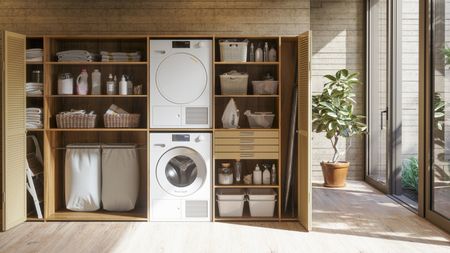 Experts reveal the 5 toxic items lurking in your laundry room – and what to swap them with for a healthier routine
Experts reveal the 5 toxic items lurking in your laundry room – and what to swap them with for a healthier routineFor a room focused on cleaning, some of its items can be surprisingly toxic
By Chiana Dickson Published